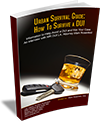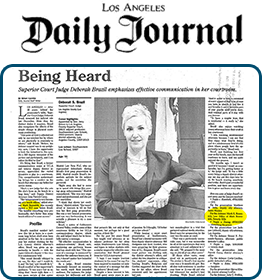Right now, the largest percentage for driving under the influence is for straight alcohol. It’s a lot easier for officers to charge drivers for this. The officers are better trained to look for alcohol, detect alcohol, and test for alcohol. We do see more and more arrests for combination of drugs and alcohol and for just straight drugs now. This is because the training and the funding increases with the drug DUIs.
Most people do not realize that for driving under the influence of drugs it doesn’t matter if it’s legal or illegal drugs. I don’t think that the average person realizes that when they take prescription medication and the bottle says, “Don’t operate heavy equipment”, that could result in a DUI arrest. People take medication under doctor’s orders, doctor supervision, therapeutic levels, and they do it every day. They walk, talk, and drive just fine. However; if they’re pulled out of the car and given field sobriety test, it could very easily be interpreted that the prescription medication is causing impairment. In some situations, there are prescription medications or illegal medications that do cause impairment and can result in injury or death. Those cases need to be looked at very carefully.
The most common drug that we see now is marijuana. It’s just a growing popularity of that. Depending on where you are and depending on who you ask, it may or may not be legal. Marijuana and THC, active and inactive, can stay in the system for extended periods of time. Whether it’s a blood test or a urine test is going to make a big difference. We have people that use it recreationally from time to time, and it may stay in the system for weeks. We may have people that do it every day and may appear to have very high levels in their system but for that particular person, it’s just a normal everyday level and it doesn’t affect their driving. There’s a lot of scientific articles and research that have gone into marijuana and driving. We actually have studies that say people who are under low to moderate levels of marijuana actually drive better than people who are not.
As far as prescription medications, there are a lot of anti-depressant medications that are prescribed and can cause problems with driving. We see a lot of those. As far as illegal drugs, we see a lot of cocaine and some methamphetamine. Officers are pretty well trained in how to spot those drugs. They’re very popular. We see a lot of arrests and DUI prosecutions for those as well.
Defending a drug DUI case is complicated, but if you focus your practice on handling DUI cases, then you see the same types of patterns. We can defend them with many of the same strategies that we use for alcohol DUIs. A lot of people think that because there’s a blood test result, that’s the end of the story, and it’s really not. There’s a lot of back-up documentation and background work that needs to be done to make sure that a blood test was done properly and to make sure that the drugs being reported are accurate. We always have a problem of active versus inactive metabolites. The issue of whether somebody is under the influence of a drug at the time of driving is different than what is indicated in a blood test. That’s with a blood test done an hour or so after driving. When we get into looking at urine analysis, it becomes even more complicated and more difficult for the prosecution to prove beyond a reasonable doubt what had been going on and what was in the system at what time.






 Personal Attention
Personal Attention Every criminal case is unique and no attorney can guarantee the outcome of a case. The information on this site is legal advertising and for general information only. Using this site, requesting books, information, consultations or communicating with Attorney Rosenfeld through its site does not form an attorney/client relationship.
Every criminal case is unique and no attorney can guarantee the outcome of a case. The information on this site is legal advertising and for general information only. Using this site, requesting books, information, consultations or communicating with Attorney Rosenfeld through its site does not form an attorney/client relationship.








